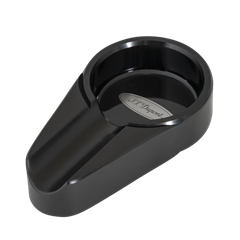Materials Used: Metal labels are crafted from a range of metals or metal alloys, each offering unique properties and aesthetics. Some common metals used include stainless steel, aluminum, brass, copper, bronze, zinc alloy, nickel-silver, and pewter. Each metal contributes to a different visual appeal, from the modern and sleek look of stainless steel to the vintage charm of brass and bronze.
Key Features: Metal labels offer several key features that make them stand out:
- Durability: Metals are inherently robust, making metal labels highly resistant to wear, weather, and other environmental factors. This longevity ensures the label’s information or branding remains intact over time.
- Customization: Metal labels can be customized to fit a wide array of shapes, sizes, and designs. They can be engraved, etched, stamped, embossed, or debossed to achieve intricate patterns, text, or logos.
- Aesthetic Appeal: The inherent luster and texture of metal lend an air of sophistication and class to products. Different finishes, such as polished, brushed, or matte, further contribute to the label’s overall look.
- Branding: Metal labels effectively communicate brand identity and enhance product recognition. The premium appearance of metal reinforces the perception of quality.
- Versatility: Metal labels find applications in diverse industries, including fashion, accessories, electronics, automotive, furniture, and industrial equipment.
- Functionality: Beyond branding, metal labels can provide vital information, such as serial numbers, model names, care instructions, and safety information.
- Variety: Different metals and finishes provide a wide range of aesthetic options, ensuring that metal labels can match the design requirements of various products.
Manufacturing Techniques: The creation of metal labels involves various manufacturing techniques, such as:
- Engraving: Cutting designs into the metal’s surface using precise tools.
- Etching: Using chemicals or lasers to create intricate patterns on the metal.
- Stamping: Pressing or striking the metal with dies to create raised or recessed designs.
- Embossing/Debossing: Raising or lowering parts of the metal’s surface to create texture and visual interest.
- Finishing: Applying coatings or treatments like painting, anodizing, or plating to add color and protection.
Applications: Metal labels are found on an array of products, including:
- Apparel and Accessories: High-end clothing, footwear, bags, and jewelry.
- Electronics: Devices, appliances, and gadgets.
- Automotive: Cars, motorcycles, and machinery.
- Furniture: Designer furniture and fixtures.
- Industrial Equipment: Machinery, tools, and instruments.
The enduring appeal and customization possibilities of metal labels make them a favored choice for creating lasting impressions and conveying essential information on a diverse range of products.

